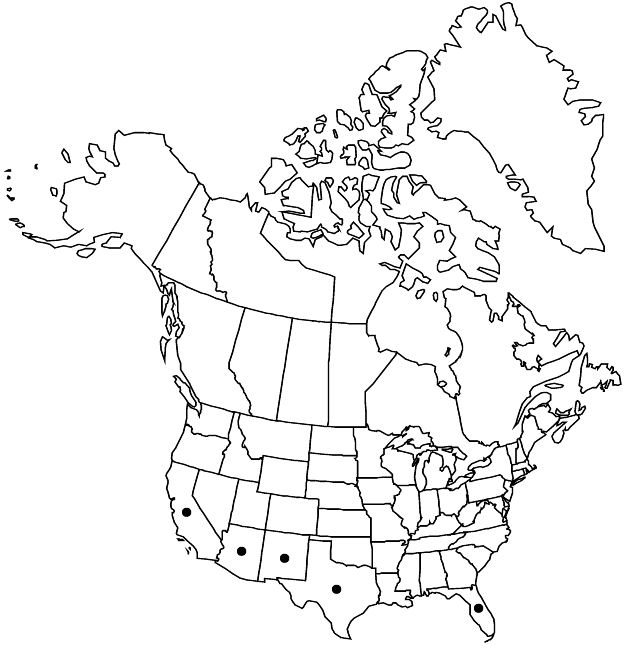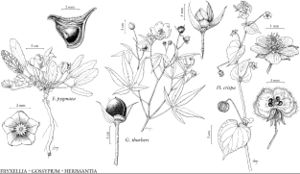Difference between revisions of "Herissantia crispa"
J. Arnold Arbor. 49: 279. 1968.
Illustrated
Basionym: Sida crispa Linnaeus Sp. Pl. 2: 685. 1753
Synonyms: Abutilon crispum (Linnaeus) Medikus A. sessifolium C. Presl Bogenhardia crispa (Linnaeus) Kearney Gayoides crispa (Linnaeus) Small Sida amplexicaulis Lamarck S. imberbis de Candolle S. retrofracta de Candolle S. sessilis Vellozo
Treatment appears in FNA Volume 6. Treatment on page 252.
FNA>Volume Importer |
imported>Volume Importer |
||
| (One intermediate revision by the same user not shown) | |||
| Line 88: | Line 88: | ||
|publication year=1968 | |publication year=1968 | ||
|special status=Illustrated | |special status=Illustrated | ||
| − | |source xml=https:// | + | |source xml=https://bitbucket.org/aafc-mbb/fna-data-curation/src/2e0870ddd59836b60bcf96646a41e87ea5a5943a/coarse_grained_fna_xml/V6/V6_458.xml |
|subfamily=Malvaceae subfam. Malvoideae | |subfamily=Malvaceae subfam. Malvoideae | ||
|genus=Herissantia | |genus=Herissantia | ||
Latest revision as of 22:21, 5 November 2020
Plants sometimes sprawling, 1–6 dm. Leaves petiolate to 52 mm, sessile distally; blade ovate to sometimes elongate-triangular, 1–8 cm, apex acuminate. Flowers: calyx rotate in flower to reflexed in fruit, 3–7 mm; petals 6–11 mm. Schizocarps on jointed pedicel near fruit; mericarps 10–12, to 10 mm, walls thin, papery. 2n = 14.
Phenology: Flowering Mar–Jan.
Habitat: Forests, grasslands, roadsides, weedy or disturbed sites
Elevation: 0–2000 m
Distribution

Ariz., Calif., Fla., N.Mex., Tex., Mexico, West Indies, Central America, South America, introduced in Asia, Australia.
Discussion
Given the weedy nature of Herissantia crispa, it would not be surprising to encounter it in other warm regions adjacent to the currently documented distribution.
Selected References
None.
Lower Taxa
None.
